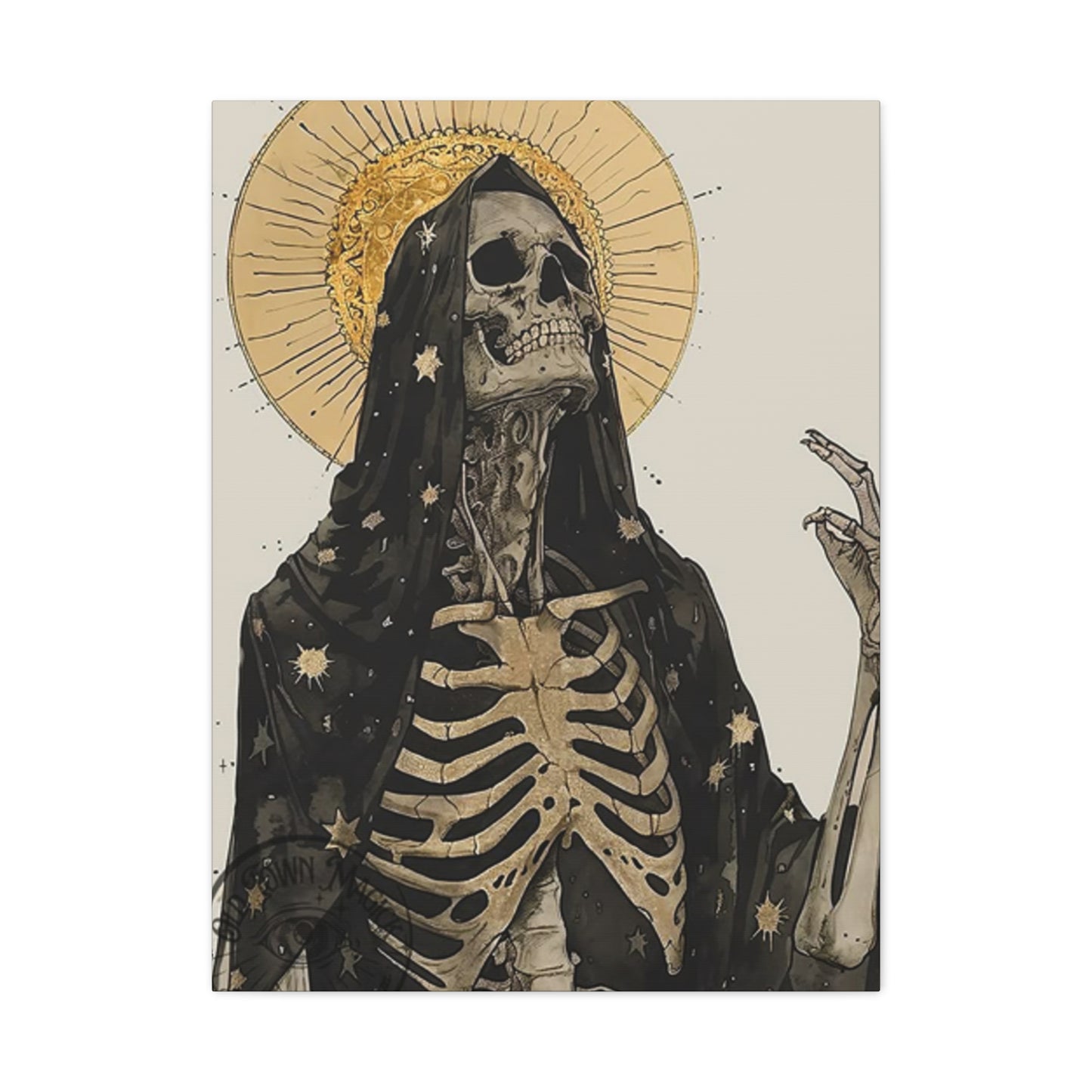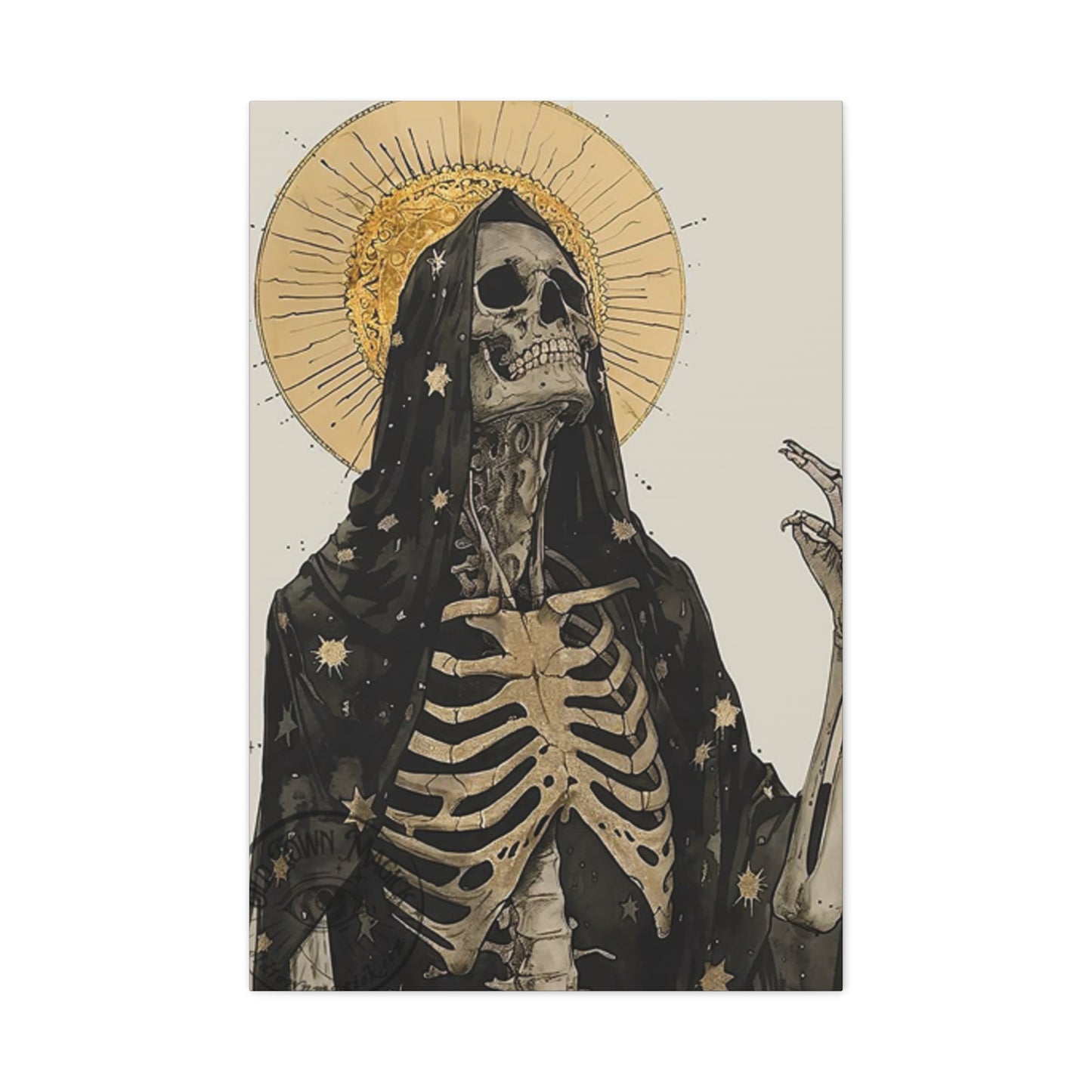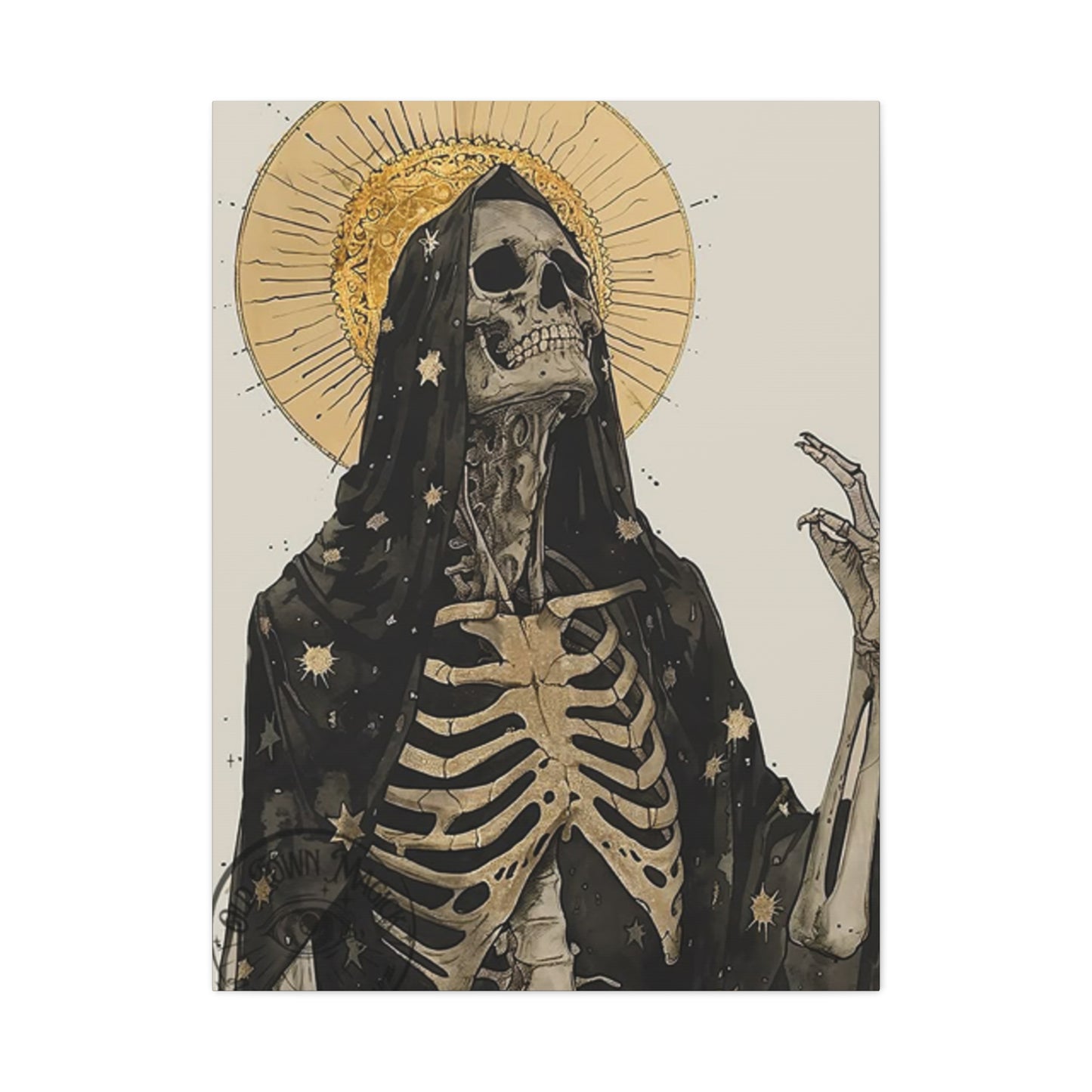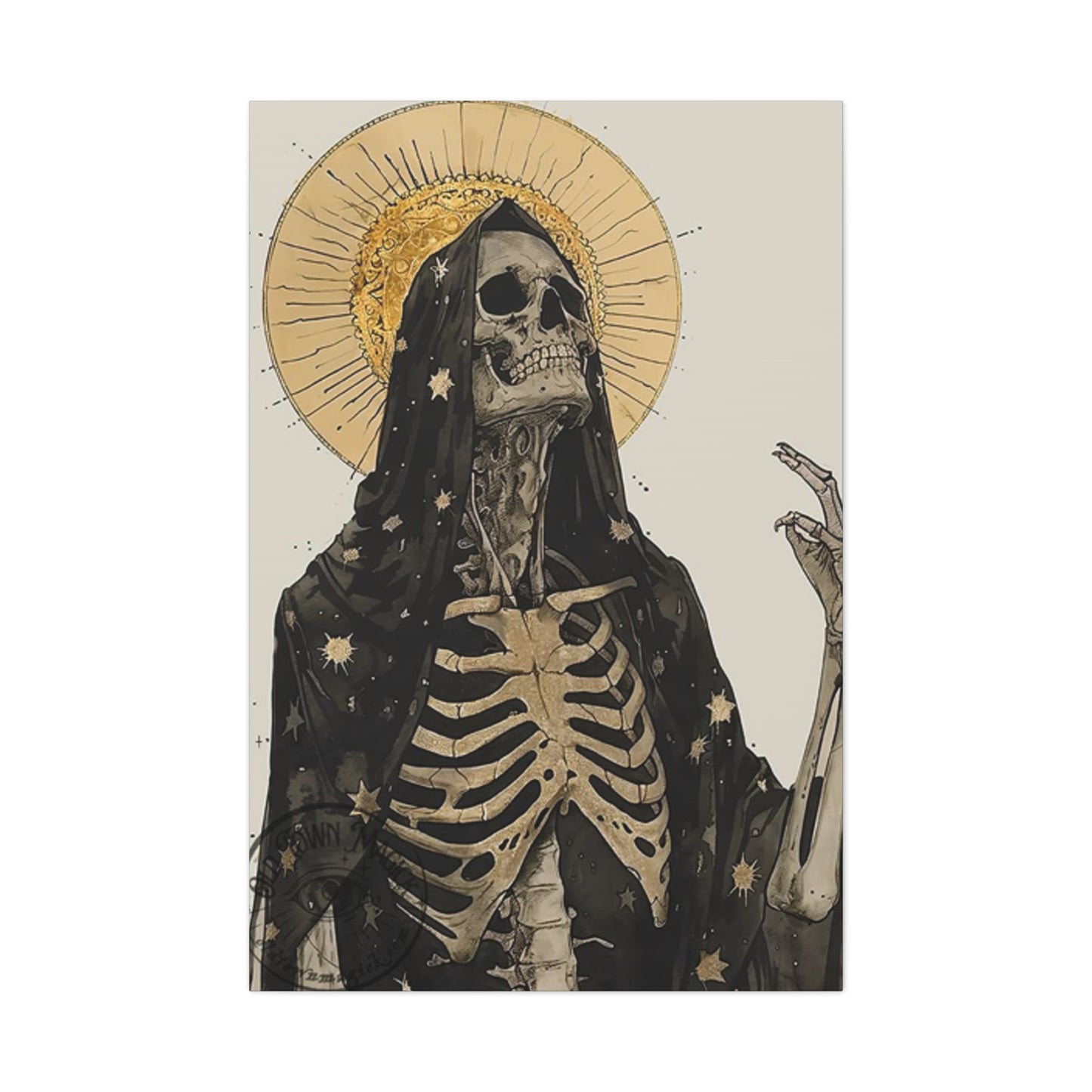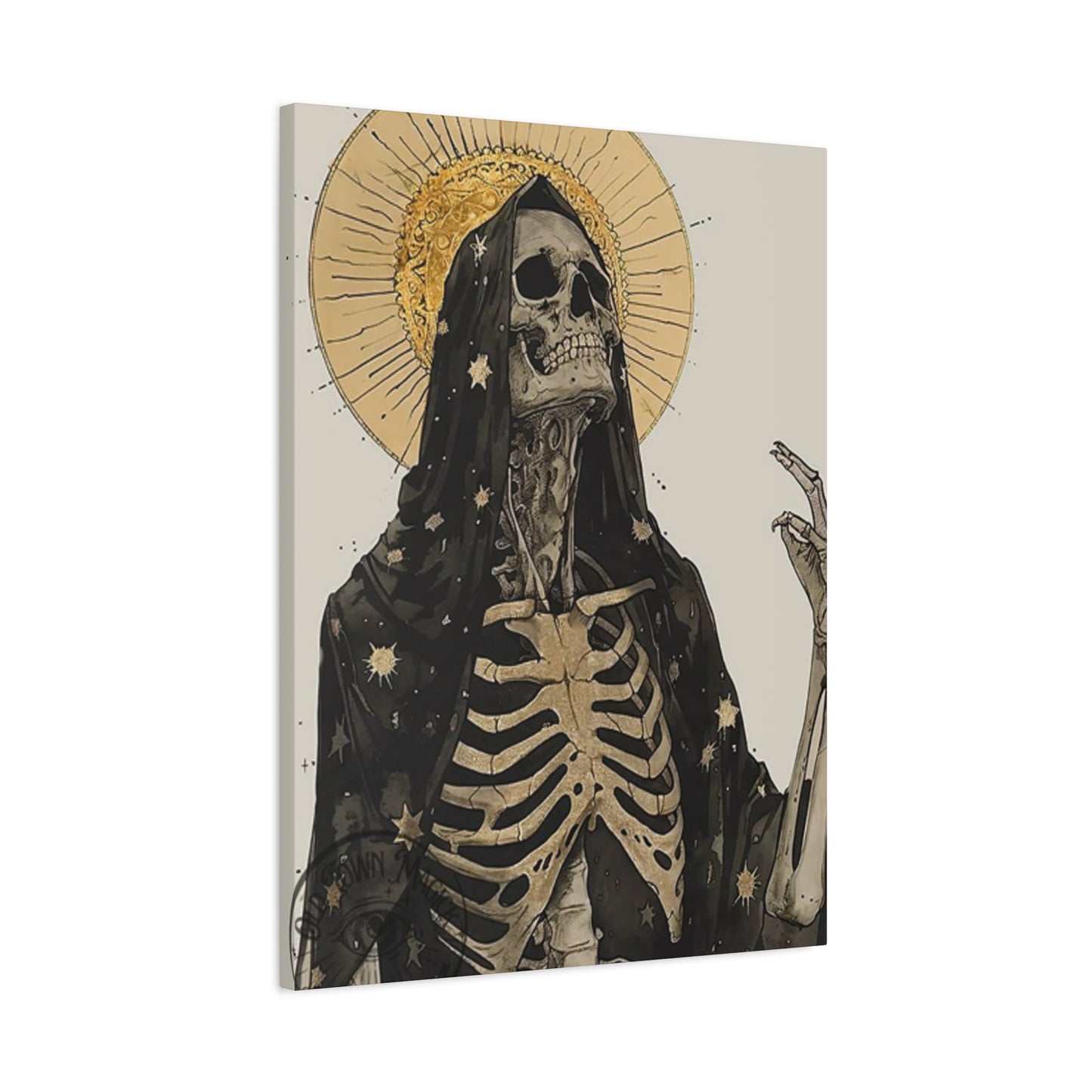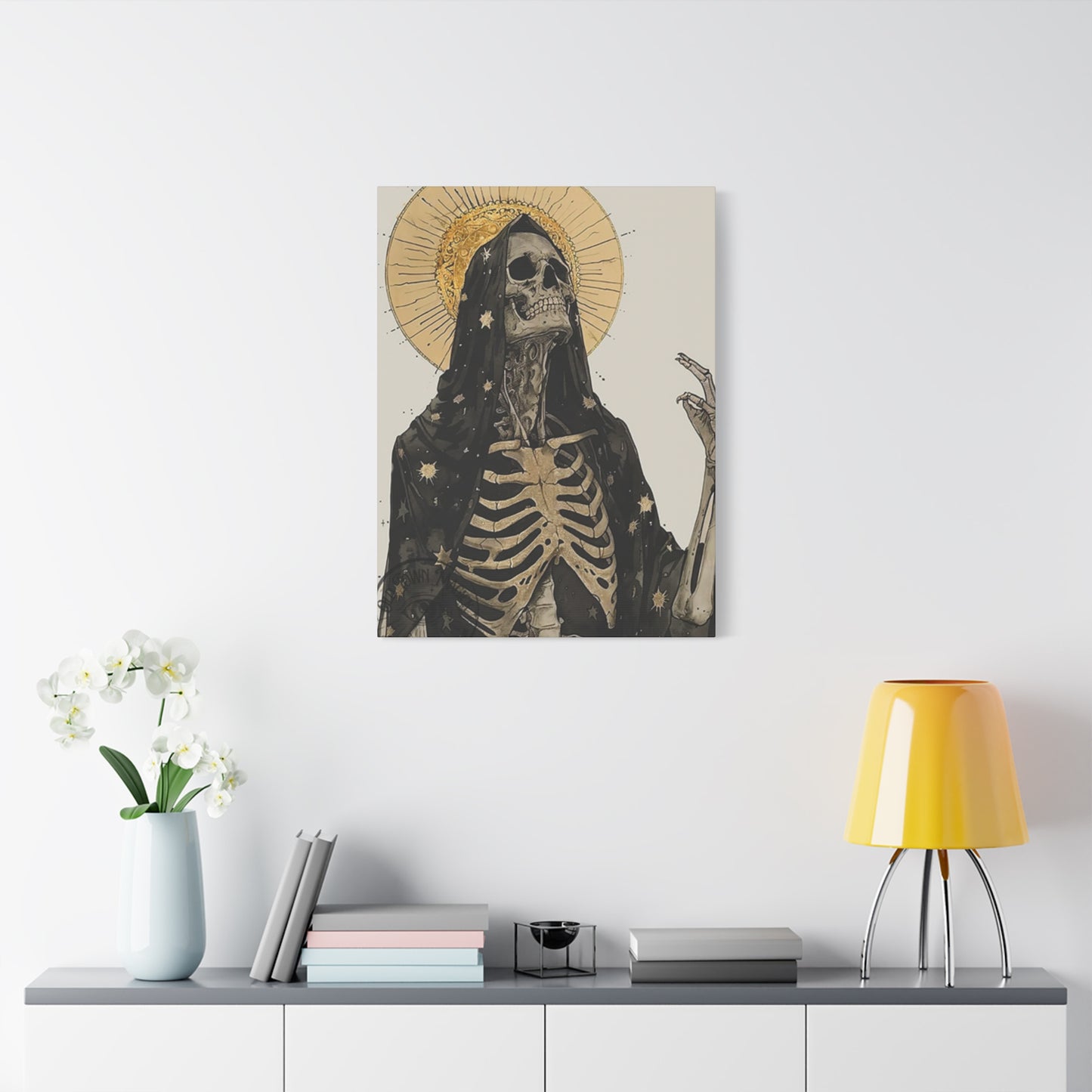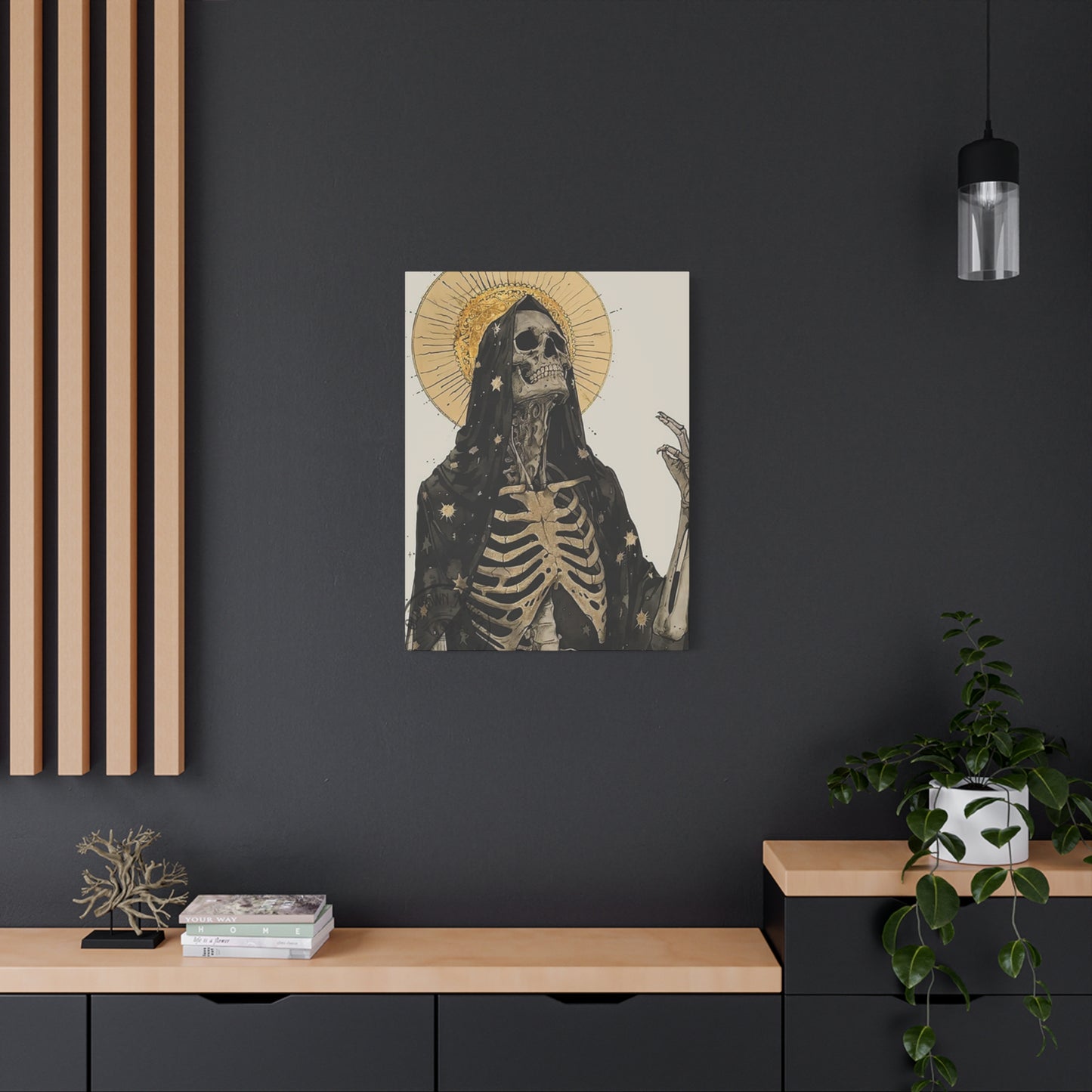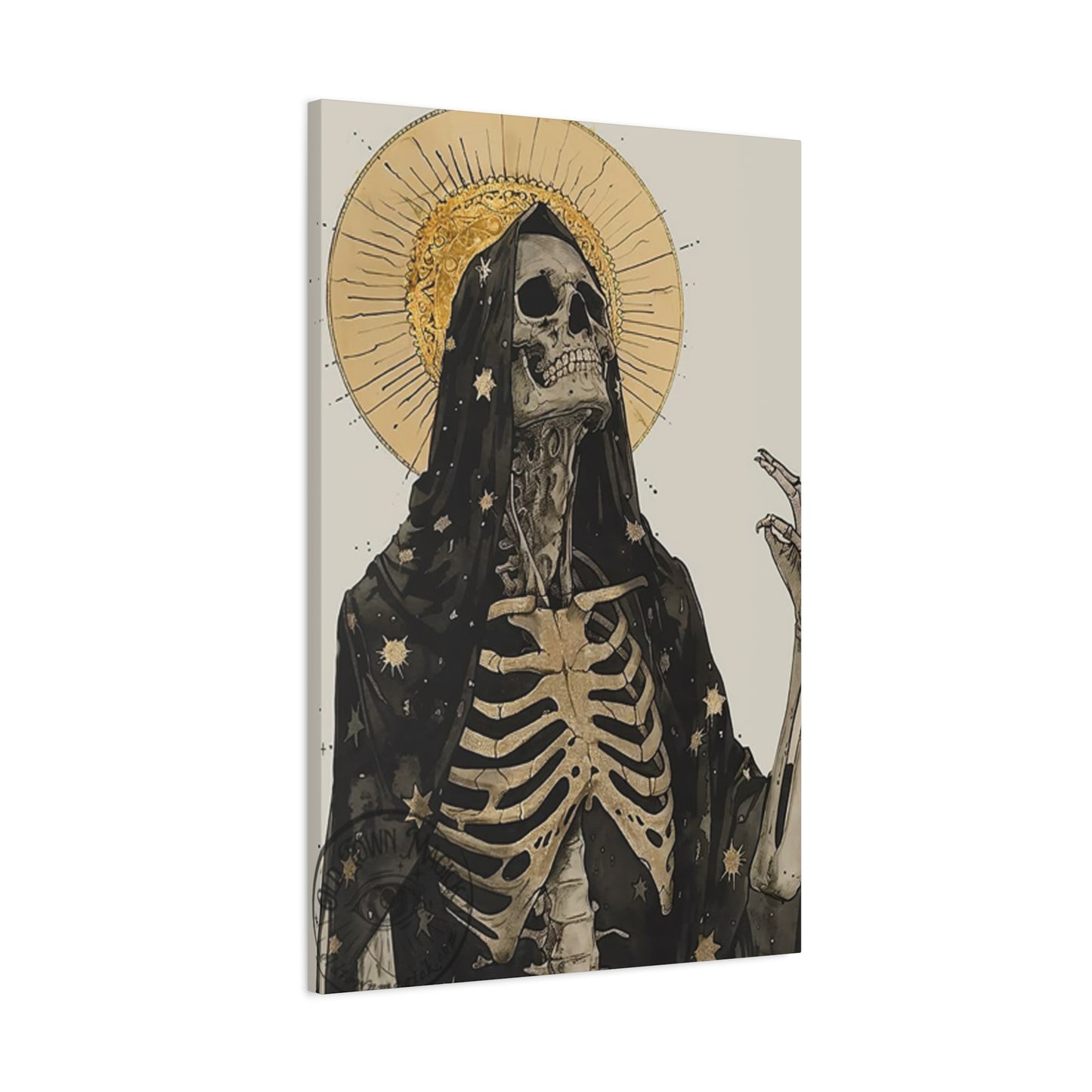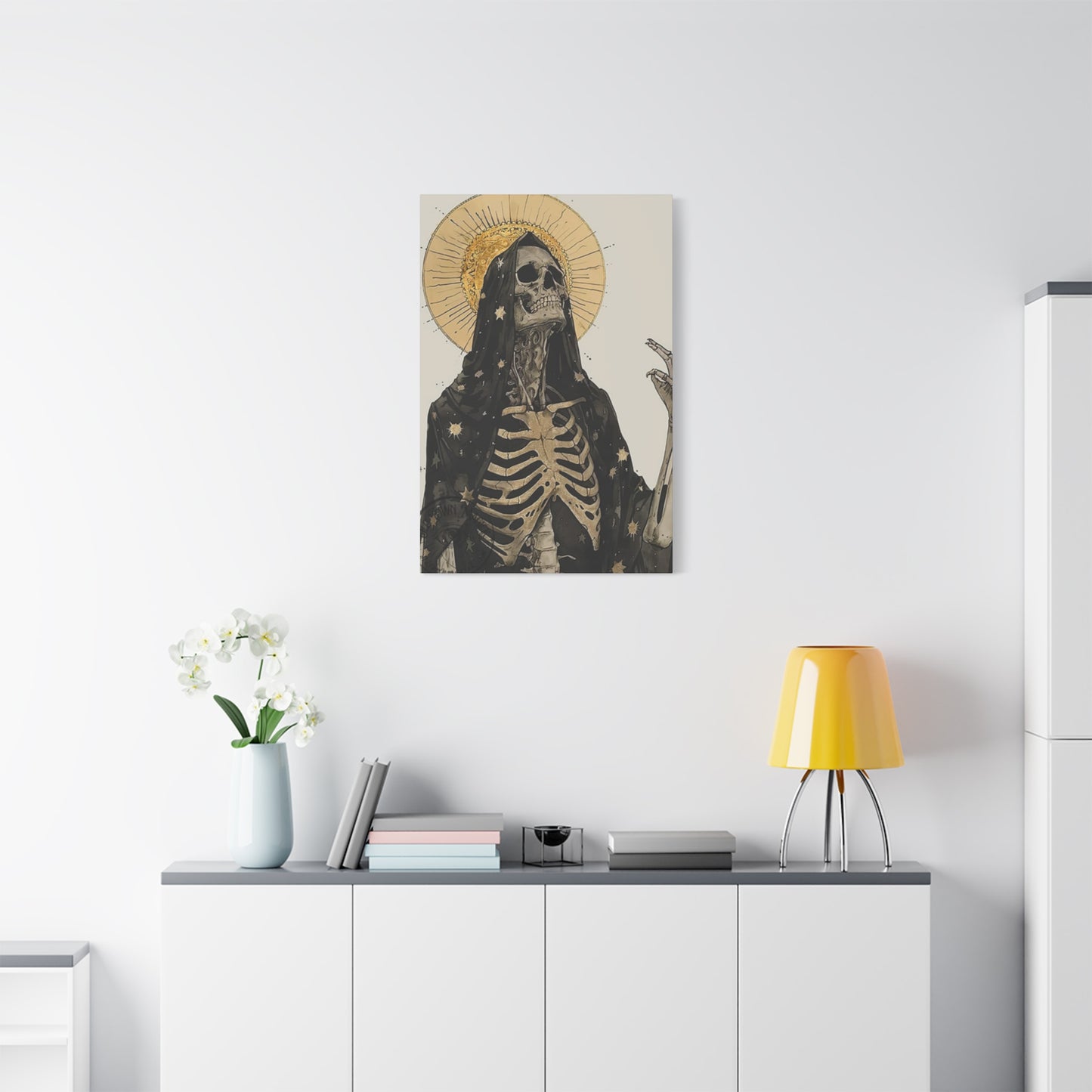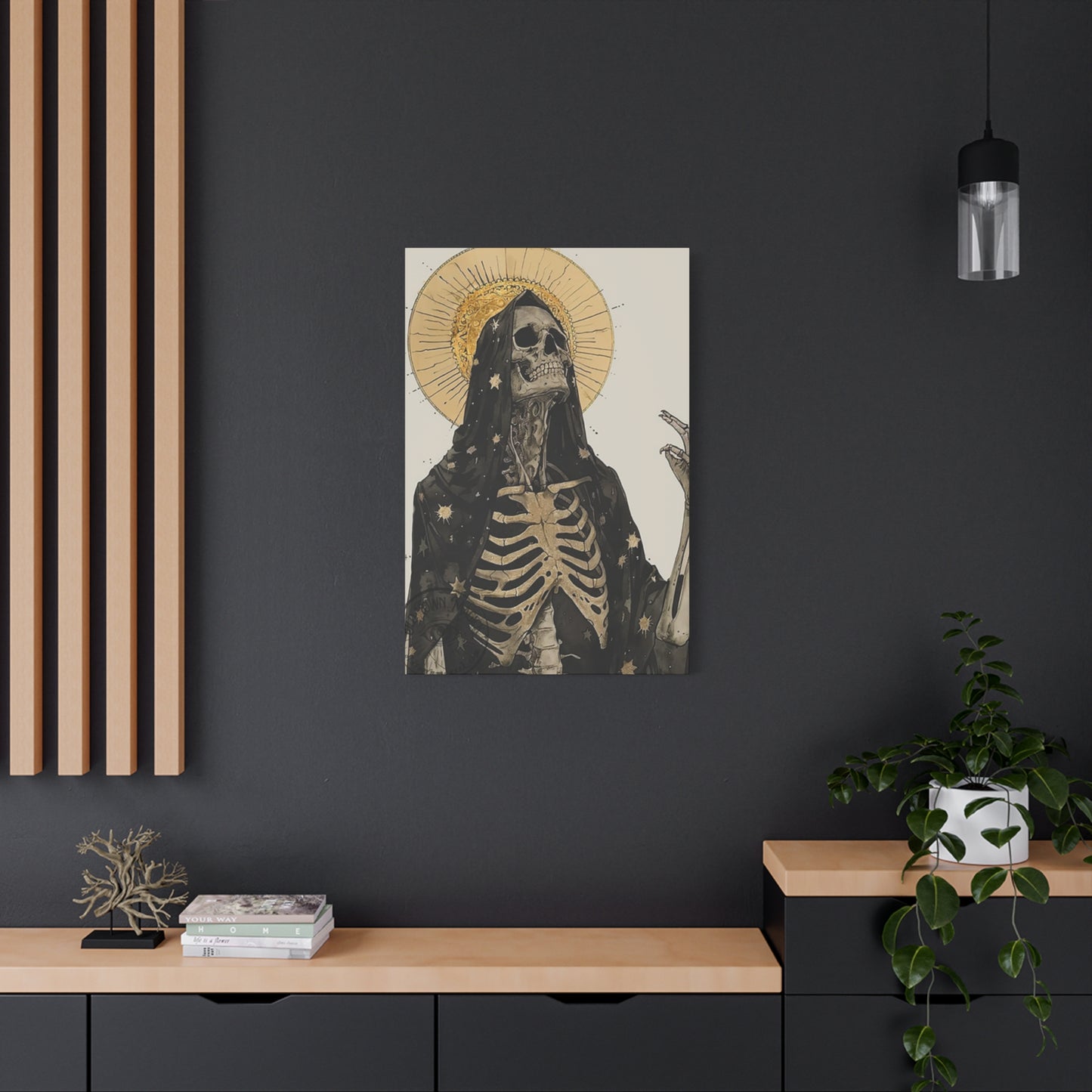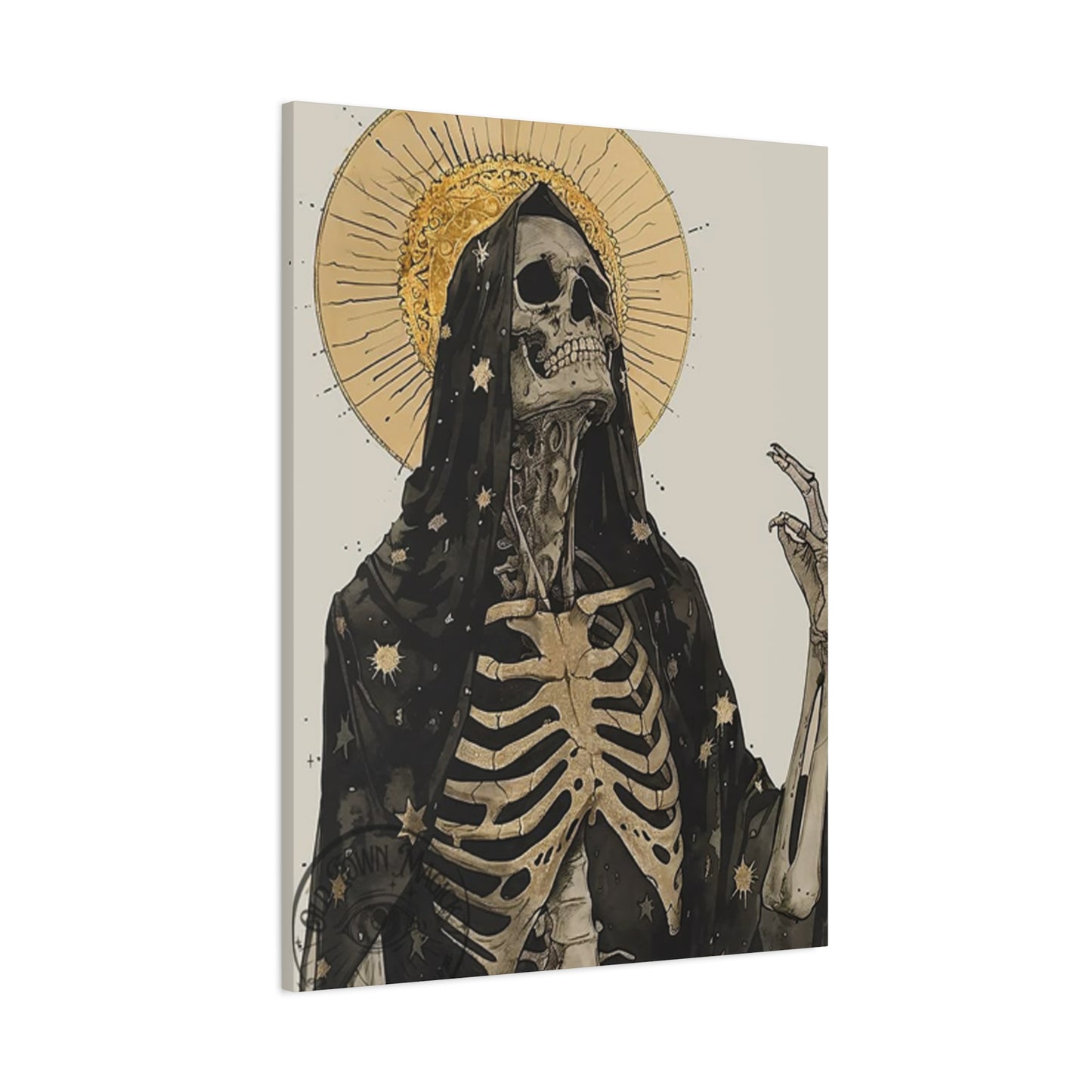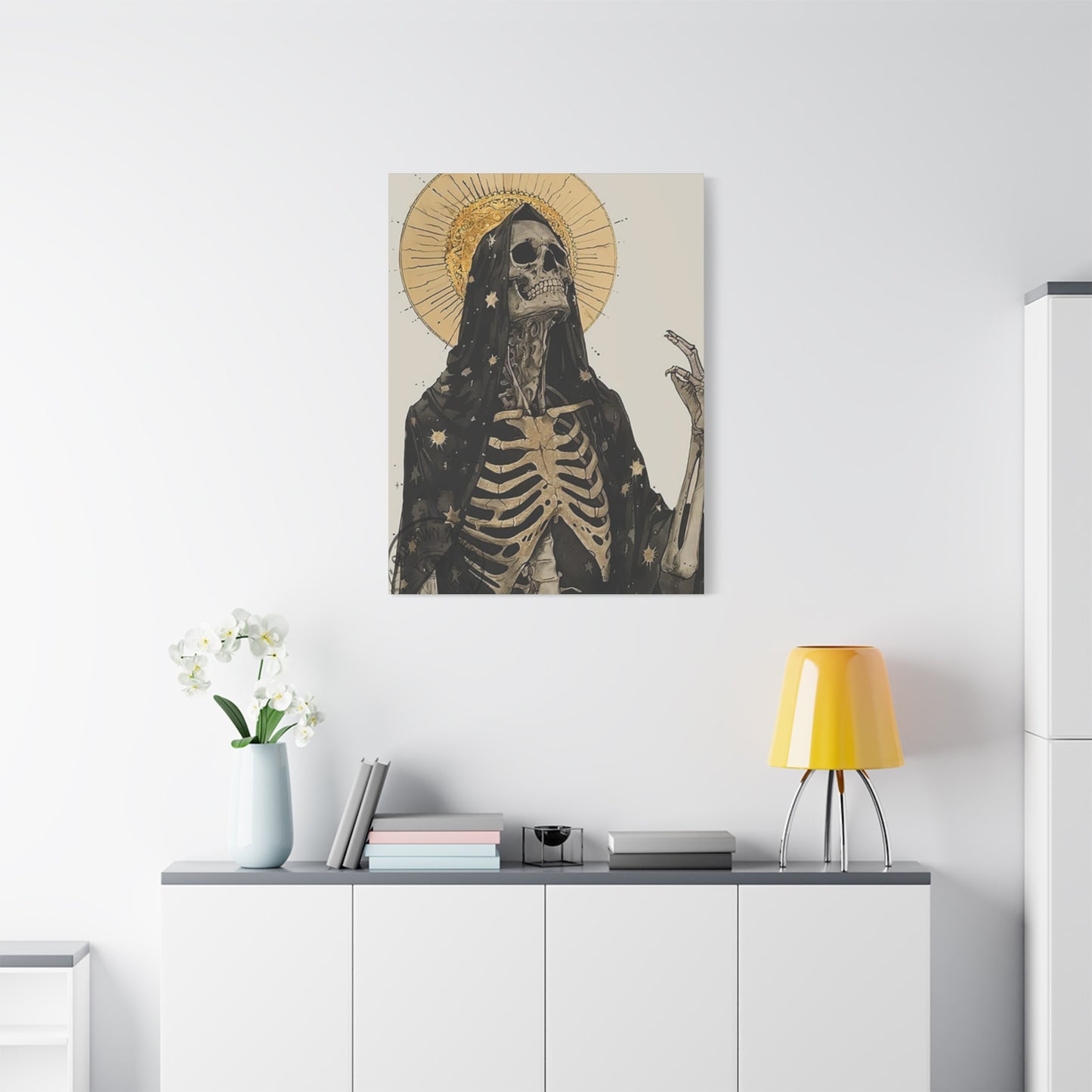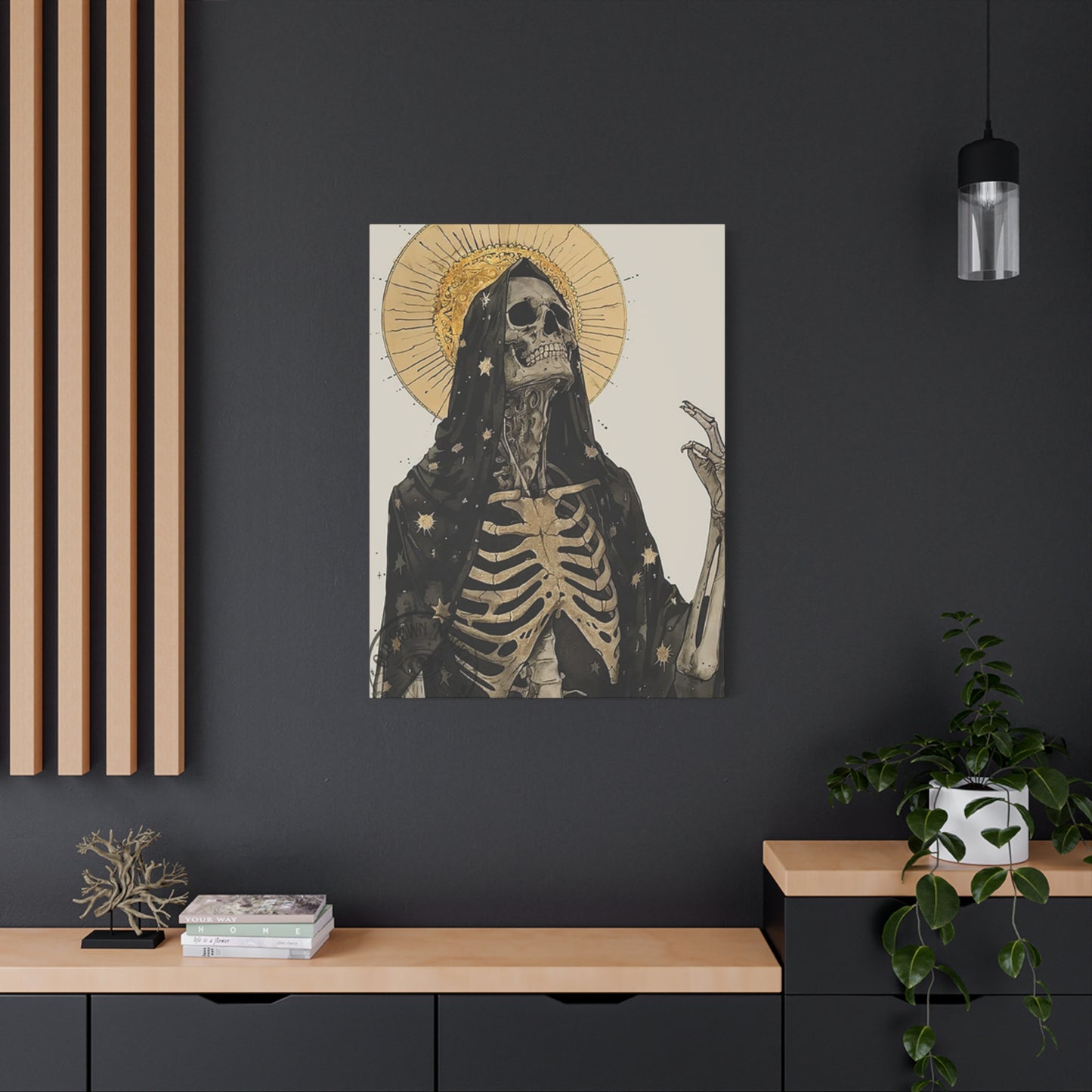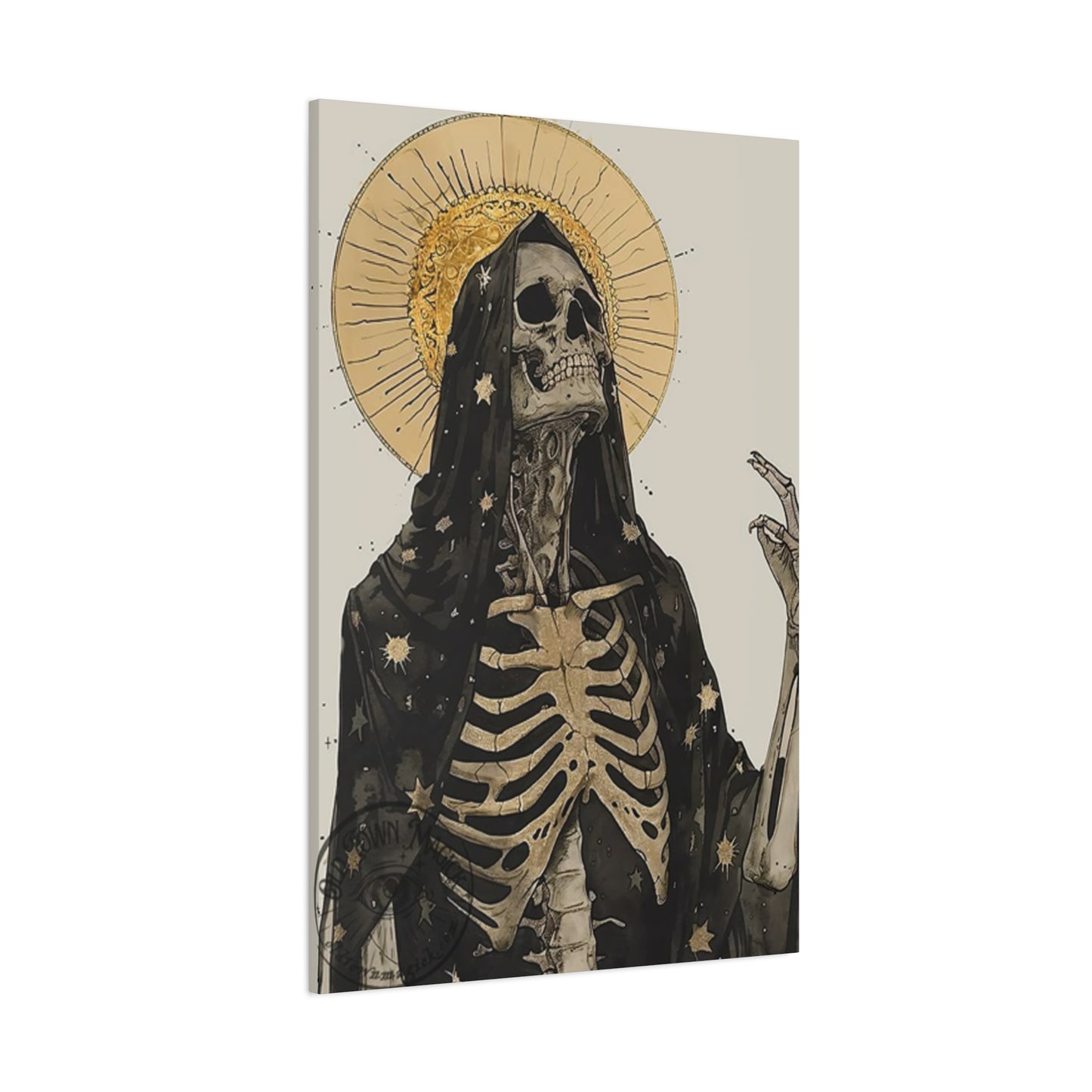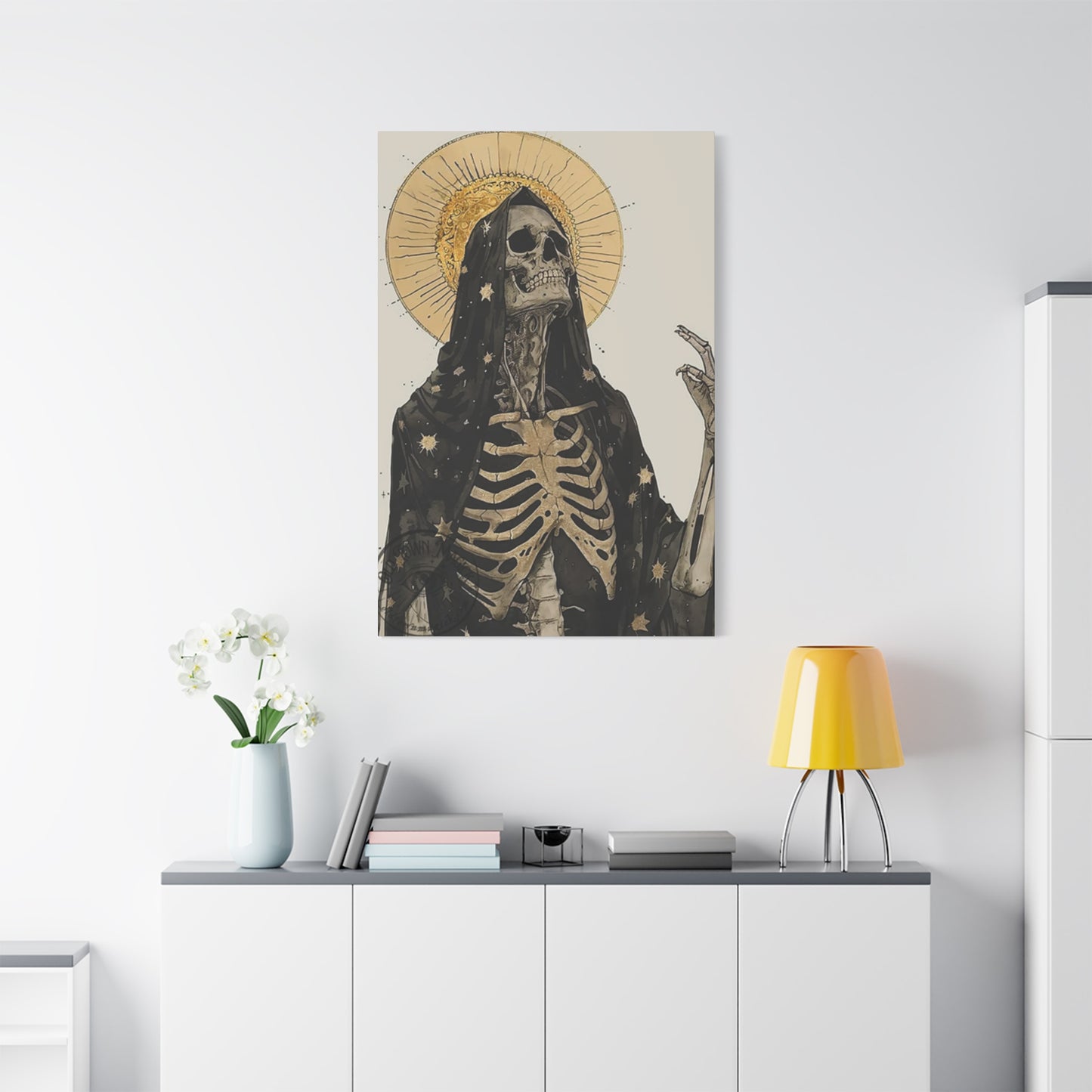Skeleton Wall Art: Decorating Ideas and Design Inspiration for Every Space
Skeleton wall art has emerged as a captivating trend in interior design, bridging the gap between scientific illustration, gothic aesthetics, and contemporary home decor. This distinctive style of decoration offers homeowners and design enthusiasts an opportunity to express their personality through artwork that challenges traditional notions of beauty while maintaining artistic sophistication. Whether you appreciate the anatomical precision of medical illustrations, the mysterious allure of gothic themes, or the rebellious spirit of alternative style, skeleton-themed artwork provides endless possibilities for creating visually striking spaces.
The growing popularity of skeleton motifs in home decoration reflects a broader cultural shift toward embracing unconventional design elements. What was once relegated to medical offices or Halloween displays has evolved into a legitimate art form that graces living rooms, bedrooms, offices, and entryways across diverse architectural styles. This transformation demonstrates how society's perception of macabre imagery has matured, recognizing the inherent beauty in anatomical structures and the artistic merit of skeletal representations.
Decorating with skeleton imagery requires thoughtful consideration of color palettes, spatial arrangement, and thematic consistency. The versatility of this design element allows it to complement various interior styles, from industrial lofts with exposed brick to minimalist Scandinavian-inspired spaces. By understanding how to incorporate these pieces effectively, you can create environments that feel both sophisticated and personally meaningful, spaces that spark conversation and reflect your unique aesthetic sensibilities.
Skeleton Poster Wall Art Ideas
Creating a cohesive design scheme with skeleton poster wall art begins with understanding the foundational principles of visual composition and thematic development. These decorative pieces serve multiple purposes within interior spaces, functioning as focal points, conversation starters, and expressions of personal taste. The key to successful implementation lies in balancing the inherent drama of skeletal imagery with surrounding design elements to create harmony rather than visual chaos.
When selecting skeleton poster wall art, consider the narrative you wish to convey within your space. Some individuals gravitate toward scientific accuracy, preferring anatomically correct representations that celebrate the engineering marvel of the human skeletal system. Others seek artistic interpretations that take creative liberties, transforming bones into abstract patterns or incorporating them into surrealist compositions. Still others appreciate historical approaches, favoring vintage medical illustrations that carry the patina of age and the charm of antiquated printing techniques.
The placement of skeleton poster wall art significantly impacts its effectiveness within a room. Positioning plays a crucial role in how viewers interact with the artwork and how it influences the overall atmosphere. Large-scale pieces demand prominent placement where they can command attention without overwhelming adjacent furniture or architectural features. Smaller works benefit from strategic grouping, creating gallery walls that tell cohesive stories through careful curation and arrangement.
Framing choices dramatically alter the presentation and perceived value of skeleton poster wall art. Simple black frames provide clean, modern borders that allow the artwork itself to take center stage, particularly effective with high-contrast black and white illustrations. Ornate vintage frames add layers of historical reference, especially when paired with antique anatomical prints, creating dialogue between the frame and subject matter. Floating frames offer contemporary alternatives that add depth and dimension, casting subtle shadows that enhance the three-dimensional quality of skeletal structures.
Lighting considerations elevate skeleton poster wall art from mere decoration to curated exhibition. Directed spotlights create dramatic shadows and highlights, emphasizing the contours and details within skeletal illustrations. Ambient lighting provides softer illumination that integrates the artwork more seamlessly into the overall lighting scheme. Natural light introduces variability, with skeletal imagery taking on different qualities throughout the day as sunlight angles shift and intensities change.
Color coordination between skeleton poster wall art and surrounding decor determines whether pieces feel integrated or jarring. Monochromatic schemes using blacks, whites, and grays create sophisticated environments where skeletal imagery feels refined rather than shocking. Introducing accent colors through matting or complementary decorative elements adds visual interest without diminishing the impact of the primary artwork. Contrasting approaches place skeleton posters against boldly colored walls, creating striking juxtapositions that amplify both the artwork and the background color.
Edgy Decor: Skeleton Canvas Prints
Skeleton canvas prints represent the intersection of traditional art presentation and contemporary subject matter, offering durability and visual impact that paper prints cannot match. The canvas medium provides texture and depth that enhances the dimensionality of skeletal illustrations, creating pieces that feel substantial and gallery-worthy. This format appeals to individuals seeking artwork that makes bold statements while maintaining artistic credibility, pieces that challenge conventional decor norms without sacrificing quality or sophistication.
The stretched canvas format eliminates framing requirements, presenting skeleton imagery as complete artistic objects rather than prints requiring additional presentation apparatus. This frameless approach contributes to contemporary aesthetics, allowing artwork to blend seamlessly with modern architectural elements. The wrapped edges of canvas prints enable continuation of imagery around sides, creating fully realized three-dimensional objects rather than flat pictures confined to two dimensions. This construction method ensures visual appeal from multiple viewing angles, important consideration for freestanding walls or spaces where artwork is visible from sides.
Canvas material characteristics influence how skeleton imagery presents visually. Cotton canvas provides natural texture that adds organic warmth to potentially clinical anatomical subjects. Polyester canvas offers smoother surfaces with enhanced color vibrancy and superior resistance to environmental factors like humidity and UV exposure. Linen canvas represents premium options with pronounced texture and superior archival qualities, ideal for investment pieces intended for long-term display. Understanding these material differences enables informed selection aligned with specific aesthetic goals and practical requirements.
Printing technologies dramatically affect skeleton canvas print quality. Giclée printing using archival inks produces museum-quality reproductions with exceptional color accuracy and longevity, with prints remaining vibrant for generations when properly displayed. Standard digital printing offers more affordable alternatives suitable for temporary installations or budget-conscious projects. Screen printing provides unique artistic qualities with visible texture and limited color palettes that create distinctive aesthetic effects. Selecting appropriate printing methods depends on intended display duration, viewing distance, and available budget.
Size selection for skeleton canvas prints balances impact with spatial constraints. Oversized statement pieces measuring several feet across command immediate attention, functioning as room focal points that organize surrounding design elements. Medium-sized works provide flexibility for grouping arrangements or standalone placement without dominating spaces. Smaller canvas prints enable creation of curated collections that build visual interest through accumulation rather than individual dramatic impact. Considering room dimensions, ceiling heights, and furniture scales guides appropriate size selection.
Gothic Vibes: Skeleton Wall Design
Gothic skeleton wall design embraces the mysterious, dramatic, and romantically dark elements that define gothic aesthetic traditions. This design approach goes beyond simple decoration, creating atmospheric environments that transport inhabitants and visitors into realms where beauty and darkness coexist harmoniously. Gothic skeleton wall design draws inspiration from medieval architecture, Victorian mourning traditions, and contemporary gothic subcultures, blending historical references with modern sensibilities to produce spaces that feel both timeless and current.
Color palettes form the foundation of gothic skeleton wall design, with deep, rich hues creating the moody backdrops against which skeletal imagery gains power. Black walls provide ultimate dramatic settings, absorbing light and creating void-like spaces where skeleton artwork appears to float ethereally. Deep burgundies, midnight blues, and forest greens offer slightly softer alternatives that maintain gothic moodiness while introducing subtle color. Metallic accents in silver, pewter, or aged gold add reflective elements that catch candlelight or strategic illumination, creating shimmering contrasts against dark foundations.
Architectural elements enhance gothic skeleton wall design beyond flat artwork. Crown molding painted in contrasting colors frames walls and creates visual separation between surfaces. Wainscoting adds textural variation and historical reference, particularly when finished in darker tones than upper wall sections. Exposed brick or stone provides rugged texture that complements skeletal imagery while reinforcing gothic architectural traditions. These structural enhancements transform simple walls into complex architectural compositions that amplify the impact of skeleton artwork.
Layering multiple design elements creates dimensional complexity characteristic of successful gothic skeleton wall design. Beginning with appropriately colored base walls, adding textured wallpapers featuring damask patterns or subtle skeletal motifs builds initial depth. Overlaying this foundation with framed skeleton artwork in varied sizes creates focal points and visual hierarchy. Incorporating three-dimensional elements like mounted skulls, bone fragments in shadow boxes, or sculptural skeletal forms adds physical depth that engages viewers spatially rather than merely visually.
Lighting strategies dramatically influence gothic skeleton wall design effectiveness. Dim ambient lighting establishes mysterious baseline illumination that encourages intimate atmospheres. Candles provide flickering illumination that animates spaces with dancing shadows, though LED alternatives offer safer options with similar visual effects. Uplighting from floor-level fixtures casts dramatic shadows upward, creating theatrical effects particularly striking when illuminating skeletal artwork. Strategically placed spotlights create pools of light that draw attention to specific pieces while leaving surrounding areas in relative darkness.
Anatomy-Inspired Skeleton Posters
Anatomy-inspired skeleton posters celebrate the scientific study of human skeletal structure, honoring centuries of medical illustration tradition while serving contemporary decorative purposes. These pieces occupy unique positions at the intersection of education and art, possessing both informational value and aesthetic appeal. Whether displayed in medical professional offices, educational institutions, or residential spaces, anatomy-inspired skeleton posters demonstrate how scientific precision can achieve artistic beauty when executed with skill and attention to detail.
Historical anatomical illustration evolved from crude woodcuts in early printed texts to sophisticated engravings in nineteenth-century medical atlases. Early anatomists like Andreas Vesalius revolutionized medical understanding through detailed skeletal drawings that corrected centuries of anatomical misconceptions. These historical illustrations featured posed skeletons in contemplative positions, often placed within landscape settings that humanized clinical subjects. Victorian-era medical illustrators achieved unprecedented detail through steel engraving techniques, producing images that remain unsurpassed for precision and artistic merit. Contemporary anatomy-inspired skeleton posters frequently reproduce these historical masterworks, bringing museum-quality imagery into accessible formats.
Anatomical accuracy distinguishes serious anatomy-inspired skeleton posters from decorative interpretations. Medically precise illustrations correctly represent bone shapes, proportions, and spatial relationships essential for educational applications. Detailed labeling identifies individual bones, anatomical landmarks, and structural features useful for students and medical professionals. Multiple viewing angles provide comprehensive understanding of three-dimensional skeletal structures through two-dimensional media. Cross-sectional views reveal internal bone architecture and spatial relationships between adjacent skeletal elements. These scientific attributes ensure anatomy-inspired skeleton posters serve practical educational purposes alongside decorative functions.
Artistic interpretation within anatomy-inspired skeleton posters ranges from photorealistic rendering to stylized simplification. Photorealistic approaches employ sophisticated shading and highlighting that creates convincing three-dimensional illusions on flat surfaces. These highly detailed renderings showcase individual bone textures, surface variations, and subtle contours. Simplified line drawing approaches strip away extraneous detail, focusing on essential forms and structural relationships. These minimalist interpretations emphasize skeletal elegance through reduction, proving that less detail sometimes communicates more effectively than exhaustive representation. Watercolor and painted approaches introduce artistic media traditionally associated with fine art, elevating anatomical subjects beyond clinical documentation.
Specialized anatomical focuses provide alternatives to comprehensive full-skeleton representations. Skull studies examine cranial anatomy in exhaustive detail, appealing to both medical professionals and design enthusiasts drawn to skull imagery's inherent symbolism. Hand and foot studies showcase the complex articulation of numerous small bones working in coordinated systems. Spinal column illustrations reveal the elegant curves and segmented structure of vertebral columns. Joint detail studies explode articulations to show how bones interact at connection points. These focused approaches allow deeper exploration of specific anatomical regions while maintaining manageable visual complexity.
Comparative anatomy expands skeleton poster possibilities beyond human subjects. Animal skeleton comparisons reveal evolutionary relationships and functional adaptations across species. Bird skeletal structures showcase hollow bones and specialized configurations enabling flight. Marine mammal skeletons demonstrate adaptations to aquatic environments through modified limb structures. These comparative approaches appeal to broader audiences beyond medical professionals, attracting biology enthusiasts, natural history buffs, and design-minded individuals appreciating diverse skeletal forms.
Modern Skeleton Wall Art Decor
Modern skeleton wall art decor reimagines traditional skeletal imagery through contemporary design sensibilities, creating pieces that feel current and sophisticated rather than macabre or dated. This approach embraces clean lines, minimalist compositions, and innovative materials that align with modern interior design principles. Modern skeleton wall art appeals to design-conscious individuals seeking artwork that makes statements without overwhelming spaces or clashing with sleek contemporary furnishings and architectural elements.
Geometric abstraction transforms recognizable skeletal forms into arrangements of shapes and lines that suggest rather than explicitly depict anatomical structures. Triangular compositions fragment skulls into faceted surfaces reminiscent of contemporary digital rendering. Circular patterns arrange vertebrae or finger bones in mandala-like configurations that emphasize symmetry and rhythm. Linear designs reduce skeletons to essential line work, stripping away all detail except fundamental structural elements. These abstract approaches allow skeleton wall art to function as modern graphic design while maintaining connections to anatomical subject matter.
Monochromatic color schemes dominate modern skeleton wall art decor, favoring sophisticated restraint over chromatic complexity. Black and white compositions provide high contrast that ensures visibility while maintaining minimalist aesthetics. Grayscale gradients introduce subtle tonal variations that add depth without color distraction. Single accent colors applied sparingly create focal points and visual interest while preserving overall minimalist sensibilities. These limited color palettes demonstrate how restriction breeds creativity, forcing reliance on composition and form rather than color variety.
Materials innovation distinguishes modern skeleton wall art from traditional paper prints or canvas reproductions. Metal prints on brushed aluminum create industrial aesthetics with inherent durability and contemporary shine. Acrylic mounted prints add dimensional depth through transparent layering that creates floating effects. Wood-mounted prints introduce natural warmth through visible grain patterns that soften clinical skeletal imagery. 3D-printed sculptural wall pieces transform two-dimensional illustrations into three-dimensional objects with actual physical depth. These material explorations expand skeleton wall art beyond flat imagery into multidimensional design objects.
Scale manipulation creates dramatic modern skeleton wall art through unexpected size relationships. Oversized detail studies magnify small anatomical elements like single vertebrae or finger bones to wall-filling proportions. Conversely, comprehensive skeletal studies compressed into modest sizes create intricate miniatures rewarding close examination. Repeated skeletal elements in varying scales create patterns and rhythms across large wall surfaces. These scale experiments demonstrate how size relationships profoundly affect viewer perception and emotional response to skeletal imagery.
Negative space utilization characterizes effective modern skeleton wall art composition. Rather than filling every inch with imagery, modern approaches embrace emptiness as active design element. Skeletal forms float in expansive white or colored voids, emphasizing their essential shapes through isolation. Fragmented skeletons trail off into nothingness, suggesting continuation beyond visible boundaries. Strategic cropping eliminates portions of skeletal structures, forcing viewer imagination to complete forms. These negative space strategies create visual breathing room preventing compositional density that overwhelms viewers.
Typography integration merges text with skeletal imagery in modern skeleton wall art. Anatomical terms overlaid on corresponding skeletal structures create educational design pieces. Philosophical quotations about mortality or human existence provide textual counterpoints to visual skeletal representations. Deconstructed words scatter letter fragments across compositions, creating secondary layers of meaning. Bold typographic elements compete with skeletal imagery for visual dominance, establishing dynamic tension between text and image. These text-image combinations appeal to viewers appreciating layered meaning and conceptual depth.
Halloween Aesthetic: Skeleton Prints
Halloween aesthetic skeleton prints embrace the playful, festive, and slightly spooky associations that skeletal imagery maintains within autumn celebration traditions. Unlike medical anatomical illustrations or gothic dark romanticism, Halloween skeleton prints lean into whimsical representations that entertain rather than educate or unsettle. This approach makes skeletal imagery accessible to broader audiences, including families with children who appreciate Halloween festivities without desiring year-round gothic environments.
Vintage Halloween imagery provides rich inspiration for contemporary skeleton prints. Early twentieth-century Halloween postcards featured friendly skeletons engaged in everyday activities like dancing, playing musical instruments, or sharing meals. These anthropomorphized skeletons projected personality and humor, transforming potentially frightening figures into amusing characters. Modern Halloween skeleton prints frequently reference these vintage aesthetics through color palettes featuring oranges, blacks, and browns, distressed textures suggesting aged papers, and illustration styles mimicking early printing techniques. These historical callbacks create nostalgic feelings particularly appealing to adults remembering childhood Halloween celebrations.
Cartoon-style skeleton illustrations dominate family-friendly Halloween prints. Exaggerated proportions with oversized skulls and simplified bone structures create approachable characters rather than accurate anatomical representations. Expressive skeletal faces convey emotions through eye socket positions and jaw angles despite lacking facial muscles. Dynamic poses show skeletons in active positions conveying movement and energy. Bright colors and bold outlines ensure visibility and visual impact. These stylistic choices make Halloween skeleton prints suitable for children's rooms and family spaces where accurate anatomical illustration might feel inappropriate.
Dia de los Muertos influences increasingly shape Halloween skeleton prints as cultural appreciation for Mexican Day of the Dead traditions spreads beyond Hispanic communities. Elaborately decorated sugar skull designs feature intricate floral patterns, geometric motifs, and vibrant color palettes celebrating life rather than mourning death. Calavera imagery depicts skeletons dressed in festive clothing engaged in celebratory activities. Marigold flowers and papel picado decorative elements provide cultural context enriching skeleton imagery with deeper meaning. These culturally influenced Halloween skeleton prints introduce educational opportunities alongside decoration, allowing conversations about diverse cultural traditions surrounding death and remembrance.
Humorous skeleton prints inject comedy into Halloween aesthetics through unexpected situations and visual puns. Skeletons depicted in contemporary scenarios like working at computers, exercising at gyms, or lounging on couches create amusing anachronisms. Skeletal pets including dogs, cats, and even dinosaurs expand skeletal themes beyond human remains. Pun-based text like "bone appetit" or "bad to the bone" combines visual and verbal humor. These comedic approaches reduce any fear associated with skeletal imagery, creating lighthearted decoration suitable for various contexts.
Black cat and skeleton combinations merge two iconic Halloween symbols into unified compositions. Skeletal cats with arched backs and raised tails echo classic Halloween silhouettes while maintaining skeletal themes. Human skeletons accompanied by feline companions create narrative scenes suggesting relationships between figures. Hybrid creatures combining cat and skeletal features blur boundaries between living and dead. These combinations allow Halloween skeleton prints to reference multiple Halloween traditions simultaneously, increasing symbolic density and visual interest.
Vintage Skeleton Illustration Wall Art
Vintage skeleton illustration wall art celebrates historical approaches to anatomical representation, showcasing artistic techniques and scientific understanding from previous centuries. These pieces carry patinas of age, whether authentic antiques or carefully crafted reproductions, that connect contemporary spaces with scholarly traditions spanning Renaissance anatomy theaters through Victorian medical education. Vintage skeleton illustrations possess inherent gravitas derived from their historical contexts, functioning as both decorative elements and cultural artifacts documenting evolution of medical knowledge and artistic technique.
Renaissance anatomical drawings represent the earliest systematic approaches to skeletal illustration, created during periods when human dissection faced religious prohibition yet medical understanding demanded accurate anatomical knowledge. Artists like Leonardo da Vinci produced skeletal studies combining artistic mastery with scientific observation, creating drawings that remain relevant centuries later. These Renaissance illustrations often appeared in manuscripts and early printed texts, characterized by woodcut or engraving techniques producing distinctive linear qualities. Modern reproductions of Renaissance skeleton illustrations bring museum-quality imagery into residential settings, connecting homes with pivotal moments in medical and artistic history.
Victorian-era medical atlases achieved unprecedented anatomical illustration sophistication through steel engraving techniques enabling extraordinary detail reproduction. Publishers like Bourgery and Jacob produced multi-volume anatomical compilations featuring life-sized skeletal illustrations remarkable for precision and artistic beauty. These Victorian skeleton illustrations often incorporated landscape backgrounds or architectural elements, presenting anatomical subjects within contextual environments rather than clinical isolation. Hand-colored versions added chromatic dimension to monochrome engravings, highlighting specific anatomical features through selective color application. Authentic Victorian anatomical prints command substantial prices among collectors, while high-quality reproductions provide accessible alternatives maintaining visual impact without prohibitive costs.
Phrenology charts represent pseudoscientific Victorian fascinations that produced visually striking skull illustrations. These charts mapped skull surface features believed to indicate personality traits and mental capacities, theories thoroughly debunked by modern neuroscience yet visually compelling as historical curiosities. Vintage phrenology skull prints showcase elaborate labeling systems dividing craniums into numbered regions, creating busy yet organized compositions balancing scientific pretension with decorative appeal. Displaying phrenology prints acknowledges historical scientific mistakes while appreciating artistic execution and cultural significance of these Victorian artifacts.
Comparative anatomy plates from natural history museums provide vintage skeleton illustration alternatives to human anatomy. Georges Cuvier's comparative anatomy works featured skeletal structures of diverse animal species, revealing evolutionary relationships and functional adaptations. These vintage zoological skeleton illustrations appeal to natural history enthusiasts and design-minded individuals seeking alternatives to human skeletal imagery. Dramatic presentations of dinosaur skeletons, extinct megafauna, or exotic animal species provide conversation-starting artwork combining scientific interest with visual impact.
Memento mori tradition influences vintage skeleton illustration interpretation and display. Medieval and Renaissance cultures embraced reminders of mortality through art incorporating skulls, skeletons, and death symbolism. These memento mori pieces encouraged contemplation of life's transience and spiritual priorities over material concerns. Vintage skeleton illustrations continuing these traditions carry philosophical weight beyond pure decoration, inviting meditation on universal human experiences of mortality and impermanence. Displaying vintage memento mori skeleton illustrations connects contemporary spaces with centuries of philosophical and artistic tradition.
Bold Statement: Skeleton Poster Canvas
Bold statement skeleton poster canvas pieces command attention through dramatic scale, striking compositions, and unapologetic presence that transforms spaces through singular artworks. Unlike subtle accents or background decoration, these pieces function as room focal points organizing surrounding design elements and immediately establishing atmospheric tone. Bold statement skeleton canvases appeal to confident decorators willing to commit to dramatic choices that spark conversation and showcase personal aesthetic courage.
Oversized dimensions characterize effective bold statement skeleton canvases, with pieces measuring multiple feet across or tall creating immediate visual impact. Large-scale presentation magnifies skeletal details visible across rooms, ensuring artwork registers even in peripheral vision. Expansive canvases fill substantial wall areas that smaller pieces cannot adequately address, preventing awkward empty spaces that disrupt visual balance. The physical presence of oversized skeleton canvases creates tangible weight within rooms, establishing hierarchy among design elements that clarifies spatial organization and intentional design thinking.
High-contrast compositions maximize bold statement impact through dramatic value relationships between light and dark elements. Pure black backgrounds create void-like spaces from which brilliant white skeleton forms emerge with startling clarity. Inverted approaches place dark skeletal imagery against brilliant white grounds, equally dramatic though psychologically different in effect. Limited mid-tone ranges eliminate gradual transitions, forcing viewer eyes to navigate abrupt boundaries between extreme values. These high-contrast approaches ensure skeleton canvases maintain visibility and impact across varying lighting conditions and viewing distances.
Unconventional color choices distinguish bold statement skeleton canvases from traditional anatomical illustration. Vibrant neon colors against dark backgrounds create electric effects reminiscent of blacklight posters but executed with contemporary sophistication. Metallic gold or silver skeleton forms suggest precious objects or sacred relics rather than clinical anatomy. Gradient backgrounds transitioning through color spectrums create atmospheric effects positioning skeleton forms within colored environments. Duotone approaches limiting palettes to two complementary or contrasting colors create stylized effects balancing visual interest with chromatic restraint.
Dramatic cropping creates bold compositions by eliminating expected skeletal views in favor of unexpected perspectives. Extreme close-ups magnify single skull regions to canvas-filling scales, transforming familiar forms into abstract patterns through radical scale shifts. Off-center framing places skeletal forms asymmetrically, creating dynamic imbalance that energizes compositions. Portions of skeleton structures extend beyond canvas edges, suggesting continuation into spaces beyond visible boundaries. These cropping strategies challenge viewer expectations while creating distinctive compositions that avoid predictable anatomical presentation formulas.
Mixed media techniques add physical texture transforming flat prints into dimensional artworks. Heavy gel mediums build sculptural surfaces emphasizing skeletal contours and creating actual depth. Metallic leaf applications add reflective elements catching light and changing appearance based on viewing angles. Collage elements incorporate additional materials like text fragments, maps, or found objects expanding meaning beyond pure skeletal representation. Encaustic techniques employing heated wax create luminous surfaces with distinctive visual qualities. These dimensional enhancements elevate skeleton canvases beyond simple prints into hybrid objects occupying spaces between two-dimensional images and three-dimensional sculptures.
Provocative subject positioning creates bold statements through unexpected skeletal arrangements. Inverted or sideways orientations challenge conventional upright presentations, introducing disorienting effects that capture attention. Fragmented skeletons scattered across canvases suggest violent dispersal or archaeological excavation. Multiple skeleton forms overlapping or interacting create complex layered compositions rewarding extended viewing. Dancing or actively posed skeletons inject movement and life into death imagery, creating paradoxical vitality. These compositional choices ensure skeleton canvases transcend static anatomical studies, becoming dynamic artistic statements.
Philosophical text integration combines visual skeletal imagery with existential questioning or memento mori messaging. Latin phrases like "memento mori" or "vanitas vanitatum" provide historical gravitas connecting contemporary canvases with centuries of mortality contemplation. Contemporary poetry or philosophical quotations about death, time, or existence add intellectual dimensions engaging viewer cognition beyond visual response. Handwritten-style text creates personal intimacy contrasting with clinical anatomical subject matter. Typography becomes integral compositional element rather than mere labeling, with text and image coexisting as equally important design components.
Placement strategies maximize bold statement skeleton canvas impact through strategic positioning. Positioning directly opposite room entrances ensures immediate visibility upon entry, establishing tone before viewers fully enter spaces. Centering above substantial furniture pieces like sofas or beds creates formal symmetry emphasizing canvas importance. Isolated placement on otherwise empty walls creates dramatic simplicity preventing visual competition. Unexpected locations like stairwell landings or corridor terminals surprise viewers encountering canvases where decoration may not be anticipated. These placement decisions amplify inherent canvas boldness through contextual positioning that emphasizes rather than diminishes impact.
Lighting design elevates bold statement skeleton canvases from passive decoration to illuminated attractions. Dedicated picture lights mounted directly on canvases ensure consistent illumination independent of ambient lighting conditions. Track lighting allows adjustable spotlighting that can emphasize specific canvas areas or create dramatic shadows. Backlighting creates glowing effects when canvases mount slightly away from walls. Color-changing LED systems enable variable lighting moods transforming canvas appearance throughout days or based on occasions. These lighting approaches recognize that bold statement pieces deserve illumination strategies acknowledging their significance within overall design schemes.
Minimalist Skeleton Art for Homes
Minimalist skeleton art embraces reductive design principles that strip skeletal representation to essential elements, creating visually quiet pieces that integrate seamlessly into contemporary spaces valuing simplicity and restraint. This approach privileges negative space, limited color palettes, and simplified forms that suggest rather than exhaustively depict anatomical structures. Minimalist skeleton art appeals to individuals seeking subtle sophistication over dramatic statements, artwork that enhances environments without overwhelming them or demanding constant attention.
Line drawing techniques dominate minimalist skeleton art, reducing complex three-dimensional skeletal structures to essential contours captured through continuous or economical line work. Single-line drawings challenge artists to represent entire skeletons without lifting drawing implements, creating fluid compositions with inherent movement and grace. Simplified line drawings eliminate unnecessary details, preserving only structural information essential for recognition. Varied line weights create visual hierarchy and depth despite overall simplicity. These linear approaches achieve maximum visual communication through minimum graphic means, exemplifying minimalist design principles applied to skeletal subject matter.
Monochromatic restraint characterizes minimalist skeleton art color schemes, with black-on-white or white-on-black representing most common approaches. Pure monochrome eliminates color distraction, focusing viewer attention entirely on form, composition, and negative space relationships. Subtle tonal variations within limited ranges add depth without chromatic variety. Single accent colors applied sparingly create focal points while maintaining overall chromatic discipline. These restricted palettes create calm visual environments supporting minimalist interior design philosophies prioritizing serenity over stimulation.
Negative space receives equal consideration with positive imagery in minimalist skeleton art composition. Expansive empty areas surround modest skeletal elements, creating breathing room that prevents visual density. Skeletal fragments float in white or colored voids, emphasizing isolation and essential form. Strategic placement of minimal skeletal imagery within composition creates balanced asymmetry more dynamic than centered symmetry. This negative space emphasis distinguishes minimalist skeleton art from maximalist approaches attempting to fill every inch with visual information.
Geometric simplification reduces organic skeletal curves to angular or circular basic shapes. Triangular faceting transforms skulls into crystalline forms reminiscent of low-polygon digital modeling. Circular patterns abstract vertebral columns or rib cages into arrangements of perfect circles. Rectangular forms contain or compose skeletal elements within strict geometric boundaries. These geometric translations maintain skeletal recognizability while achieving abstraction levels appropriate for minimalist aesthetics valuing form purification over naturalistic representation.
Scale reduction creates intimate minimalist skeleton art pieces contrasting with bold statement approaches. Modest dimensions encourage close viewing, rewarding attentive viewers with subtle details while maintaining overall simplicity. Small-scale pieces prevent overwhelming spaces, serving as accent elements within larger minimalist design schemes. Multiple small minimalist skeleton pieces arranged with generous spacing create distributed visual interest without compositional density. This modest sizing aligns with minimalist values emphasizing sufficiency over excess, where small pieces adequately fulfill decorative purposes without unnecessary enlargement.
Material choices enhance minimalist skeleton art through selections emphasizing quality over ornamentation. Fine art papers with subtle textures provide tactile interest within simplified compositions. Simple wood frames in natural finishes complement rather than compete with minimal imagery. Frameless mounting on archival boards creates clean presentations eliminating visual barriers between artwork and walls. Metal prints on brushed aluminum introduce industrial minimalism appropriate for modern spaces. These material selections demonstrate how minimalist approaches extend beyond imagery into every aspect of artwork presentation.
Scandinavian design principles heavily influence minimalist skeleton art, with Nordic aesthetics emphasizing functionality, simplicity, and connection with nature. Light woods, white backgrounds, and clean lines characteristic of Scandinavian interiors pair naturally with minimalist skeleton art. Hygge concepts valuing coziness and comfort ensure even skeletal imagery maintains inviting rather than clinical atmospheres. Nature-inspired minimalism sometimes incorporates subtle botanical elements alongside skeleton forms, creating balanced compositions acknowledging life and death cycles. These Scandinavian influences soften potentially harsh minimalism, creating approachable artwork suitable for residential warmth.
Artistic Anatomy: Skeleton Wall Decor
Artistic anatomy skeleton wall decor occupies the intersection where scientific accuracy meets creative expression, producing pieces that educate while delighting visually. This category encompasses works where anatomical understanding provides foundation upon which artistic interpretation builds, resulting in decoration that satisfies both intellectual curiosity and aesthetic appreciation. Artistic anatomy appeals to individuals valuing substance alongside style, seeking wall decor carrying meaning beyond pure visual impact.
Watercolor skeleton illustrations introduce painterly qualities that soften clinical anatomical precision through fluid media characteristics. Transparent watercolor layers create luminous skeletal forms with visible brushwork adding human touch. Color bleeds and unexpected pigment interactions introduce controlled unpredictability contrasting with mechanical printing precision. Loose interpretation balances anatomical accuracy with artistic freedom, maintaining recognizable skeletal structures while embracing expressive mark-making. These watercolor approaches demonstrate how traditional artistic media can revitalize anatomical subjects potentially feeling stale in purely technical presentations.
Charcoal and graphite drawings emphasize tonal modeling that creates convincing three-dimensional illusions of skeletal forms on two-dimensional surfaces. Subtle value gradations suggest rounded bone surfaces catching light and casting shadows. Smudging and blending techniques create atmospheric effects surrounding skeleton subjects. Varied mark-making from delicate hatching to bold gestural strokes adds visual texture and movement. These traditional drawing approaches showcase artistic skill while maintaining strong connections to historical anatomical illustration traditions valuing draftsmanship and observational accuracy.
Mixed media collage combines skeletal imagery with diverse materials creating layered compositions rich with meaning and visual interest. Vintage book pages or sheet music backgrounds provide textured foundations carrying their own histories and associations. Botanical elements pressed or illustrated alongside skeletal structures explore life-death relationships and cycles. Geometric shapes and patterns create frameworks organizing skeletal elements. Found object integrations including actual bones, shells, or organic materials add three-dimensional elements. These collage approaches produce unique artworks impossible to reproduce exactly, appealing to collectors valuing originality and handcrafted qualities.
Surrealist interpretations transport skeleton imagery beyond anatomical documentation into dreamlike realms where logic suspends and imagination rules. Skeletal structures merge with unexpected elements like flowering plants growing from skulls or butterflies emerging from rib cages. Impossible architectures construct environments from bone elements arranged in gravity-defying configurations. Scale distortions place tiny complete skeletons beside enormous single bones. These surrealist approaches use anatomical elements as raw materials for fantastical compositions that prompt wonder and contemplation beyond straightforward anatomical interest.
Expressionist skeleton artwork emphasizes emotional content and subjective experience over objective anatomical representation. Distorted proportions convey psychological states rather than physical accuracy. Energetic brushwork or mark-making channels emotional intensity into visual forms. Unconventional color choices express feelings rather than depicting realistic coloration. Fragmented or abstracted skeletal forms suggest psychological states of anxiety, dissolution, or transformation. These expressionist approaches demonstrate how skeletal imagery can carry emotional weight and psychological complexity transcending mere representation.
Botanical anatomy fusion creates artistic skeleton wall decor exploring relationships between plant and animal kingdoms. Flowers blooming from skull eye sockets suggest life emerging from death. Vines and roots intertwining with skeletal structures indicate nature reclaiming organic matter. Symmetrical arrangements alternating botanical and skeletal elements create formal compositions balancing opposing symbolic elements. These botanical-skeletal hybrids appeal to viewers appreciating nature-inspired decoration while maintaining interest in anatomical themes, creating bridges between different decorative traditions.
Entryway Accent: Skeleton Wall Poster
Entryway accent skeleton wall posters create powerful first impressions, establishing home personality immediately upon entry while setting atmospheric tone for subsequent interior spaces. Strategic entryway decoration serves multiple functions including welcoming guests, defining homeowner aesthetic, and creating transitions between exterior public spaces and interior private domains. Skeleton wall posters in entryways communicate confidence, sophistication, and willingness to embrace unconventional design choices that distinguish memorable homes from generic spaces.
First impression significance demands careful skeleton wall poster selection for entryway placement, as these pieces represent homeowner personality before verbal introductions occur. Bold confident imagery suggests self-assured individuals comfortable making distinctive aesthetic statements. Sophisticated artistic approaches demonstrate cultural awareness and educated taste. Humorous or whimsical skeleton presentations indicate playful personalities that don't take themselves overly seriously. Dark gothic skeleton posters signal appreciation for alternative aesthetics and possibly deeper philosophical interests. These immediate communications shape guest perceptions and set expectations for hospitality and interaction styles they will encounter.
Spatial considerations unique to entryways affect skeleton wall poster selection and placement. Entryways typically offer limited wall space due to door swings, coat closets, and furniture like console tables or benches. Vertical orientation often works better than horizontal in narrow entryway corridors. Smaller scaled posters prevent overwhelming confined spaces while maintaining visibility. Strategic placement above furniture or between architectural features maximizes limited available wall areas. These spatial constraints require thoughtful planning ensuring skeleton wall posters enhance rather than crowd entryway functionality.
Lighting challenges in entryways frequently include limited natural light and heavy reliance on artificial illumination. Skeleton wall posters with high contrast remain visible in low-light conditions common in windowless entryways. Strategic placement near light sources ensures adequate illumination without requiring dedicated picture lighting. Reflective elements in skeleton poster frames or imagery catch available light, enhancing visibility. Motion-activated lighting that illuminates upon entry ensures skeleton wall posters receive adequate illumination during actual viewing moments rather than sitting invisible in darkened entryways between uses.
Durability requirements suit entryways experiencing heavy traffic, temperature fluctuations from opening exterior doors, and potential moisture from wet weather. Glass-covered framed skeleton posters provide protection from touching, humidity, and temperature variations. Canvas or mounted prints offer durability superior to unprotected paper prints. Secure mounting prevents accidents from posters jarred loose by door vibrations or accidental contact. Easy-clean surfaces simplify maintenance in high-traffic areas prone to fingerprints and dust accumulation. These practical considerations ensure entryway skeleton wall posters maintain appearance despite challenging conditions.
Coordinated design integrates entryway skeleton wall posters with adjacent decorative elements creating cohesive first impressions. Console table styling echoes colors, themes, or moods established by skeleton posters. Mirror frames harmonize with poster framing choices. Lighting fixtures complement overall aesthetic established by skeleton imagery. Flooring and wall colors provide appropriate backgrounds ensuring skeleton posters read clearly. This coordination prevents isolated decoration in favor of thoughtfully composed entryway environments where skeleton wall posters anchor overall design concepts.
Seasonal flexibility allows entryway skeleton wall posters rotating based on time of year or special occasions. Permanent year-round skeleton displays maintain consistent home personality presentation. Seasonal rotation introduces fall-specific skeleton posters during autumn months, replacing them with other themes during remaining seasons. Holiday variations incorporate Halloween-specific skeleton imagery during October. Anniversary or special event posters commemorate meaningful occasions. Easy-change hanging systems facilitate rotations without wall damage or complicated reinstallation processes.
Guest consideration acknowledges that entryway skeleton wall posters receive viewing from visitors potentially uncomfortable with skeletal imagery. Artistic rather than graphic presentations reduce shock value while maintaining aesthetic impact. Humorous approaches lighten potentially morbid subject matter. Educational or historical skeleton posters provide intellectual context legitimizing potentially controversial choices. Ultimately, homeowners must balance guest comfort with authentic self-expression, recognizing that distinctive decoration naturally generates varied reactions reflecting diverse personal tastes and sensitivities.
Dark Aesthetic Skeleton Canvas Art
Dark aesthetic skeleton canvas art embraces shadowy, moody, and atmospheric approaches that create brooding environments charged with mystery and emotional depth. This design category extends beyond simple color choices into comprehensive aesthetic systems valuing darkness as positive design element rather than absence requiring correction. Dark aesthetic skeleton canvas art appeals to individuals rejecting conventional preference for brightness, instead finding beauty, comfort, and sophistication in darker tonal ranges and shadowy atmospheric effects.
Matte black backgrounds provide ultimate dark foundations against which skeleton imagery gains ethereal luminosity. Pure black voids create infinite depth suggestions where skeleton forms appear suspended in darkness. Matte finishes absorb rather than reflect light, intensifying darkness without distracting gloss or shine. Charcoal blacks introduce subtle warmth preventing coldness that pure neutral blacks sometimes project. These black backgrounds transform skeleton canvas art into windows onto shadowy realms rather than simple pictures hanging on walls.
Smoke and fog effects introduce atmospheric depth creating environmental contexts for skeleton imagery. Misty effects partially obscure skeletal forms, suggesting mysterious depths and limited visibility. Smoke wisps curl around bone structures adding movement and transient beauty. Fog gradients transition from visible skeleton foregrounds into obscured backgrounds, creating spatial depth. These atmospheric effects transform flat canvas surfaces into suggestions of three-dimensional spaces where skeleton elements exist within tangible environments rather than floating in abstract voids.
Moonlight illumination creates natural lighting scenarios within dark aesthetic skeleton canvas art. Silver-blue tones suggest nocturnal lighting casting ethereal glows across skeletal forms. Dramatic side lighting emphasizes bone textures and surface variations through extreme highlight-shadow contrasts. Backlighting creates silhouetted effects where skeleton forms appear as dark shapes against slightly lighter backgrounds. These moonlit lighting scenarios create romantic gothic atmospheres while providing logical illumination sources within compositions.
Decay aesthetics incorporate deterioration, aging, and entropy into dark skeleton canvas art. Weathered bone textures show centuries of exposure to elements. Cracked surfaces reveal internal structures and material breakdown. Rust, corrosion, and patina colors introduce browns, oranges, and greens contrasting with monochrome skeletal forms. Fragmentary or incomplete skeletons suggest archaeological excavation or natural decomposition processes. These decay aesthetics celebrate beauty in destruction and transformation, finding visual interest in processes typically hidden or avoided.
Conclusion
Skeleton Wall Art: Decorating Ideas and Design Inspiration for Every Space highlights the versatility and unique appeal of skeletal-themed artwork in modern interior design. Skeleton wall art goes beyond the traditional associations with Halloween or macabre imagery—it serves as a bold statement of creativity, cultural symbolism, and contemporary aesthetic. By integrating skeleton-themed pieces into your living spaces, you can create rooms that are visually striking, conversation-worthy, and full of personality, while celebrating artistry, history, and modern design trends.
The allure of skeleton wall art lies in its ability to balance edginess with sophistication. From anatomically accurate depictions to abstract interpretations and stylized designs, these artworks cater to a wide range of tastes and interior styles. Minimalist black-and-white skeletal prints can add subtle intrigue to modern spaces, while colorful or mixed media renditions provide vibrant energy and depth. Whether showcased as a single large canvas or a curated gallery wall, skeleton art becomes a focal point that commands attention and sparks conversation.
Placement and scale are essential considerations for maximizing impact. Large skeletal prints work beautifully as statement pieces in living rooms, home offices, or hallways, immediately drawing the eye and establishing the room’s character. Smaller pieces, grouped creatively or layered with complementary art, enhance bedrooms, studios, or reading nooks with subtle yet impactful accents. Skeleton-themed wall art is versatile enough to complement modern, industrial, eclectic, and even traditional interiors, ensuring that it can be seamlessly incorporated into a variety of spaces.
Color, texture, and design detail are key in enhancing the overall aesthetic of skeletal artwork. Monochromatic palettes can evoke elegance and sophistication, while bold, colorful designs create energy and visual interest. Mixed media skeleton art, incorporating materials such as metallic accents, textured canvases, or layered compositions, adds depth and dimension to your walls, transforming them into immersive visual experiences. By pairing skeleton artwork with complementary décor elements—industrial furniture, natural wood, or minimalist accessories—you create cohesion and elevate the overall room design.
Lighting is another critical factor in showcasing skeleton wall art. Proper illumination accentuates intricate details, highlights textures, and enhances shadows, ensuring that the artwork is visually dynamic and engaging. Whether through natural light, ambient room lighting, or accent spotlights, careful attention to illumination can transform skeletal prints from static decorations into lively, eye-catching features that animate the space.
Beyond visual appeal, skeleton wall art carries symbolic and emotional resonance. Skeletons often represent the cycle of life, resilience, and the beauty of form, offering both intellectual and philosophical depth. By displaying these pieces in your home, you create a space that encourages reflection, creativity, and appreciation for artistic expression, while also making a bold stylistic statement.

















